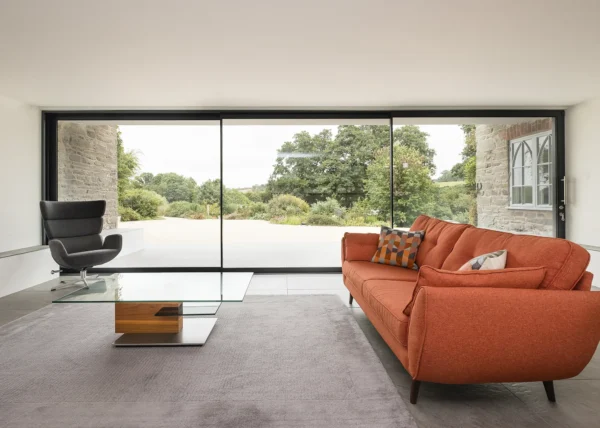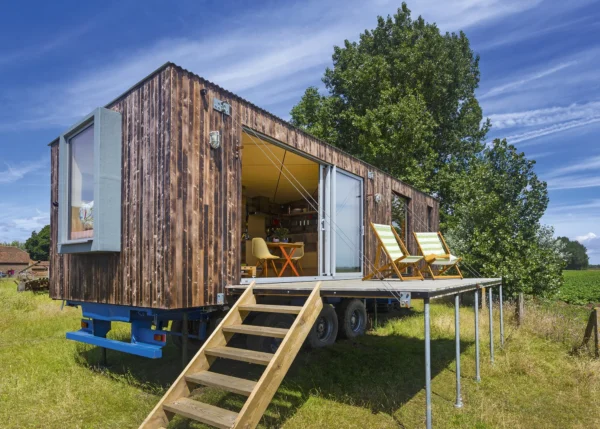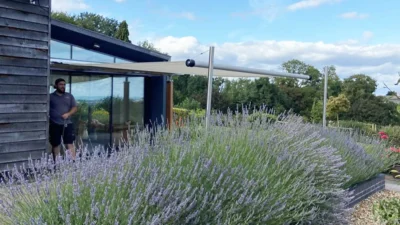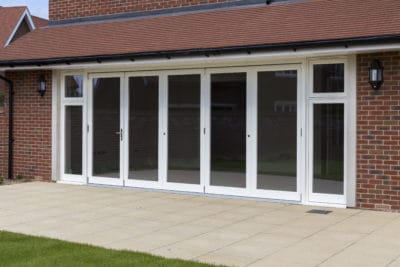Corner Bifold Doors: How Do Corner Bifolds Work & Are They Right for You?
Corner bifold doors can make a real statement in your self build, extension or renovation project, but how do they differ from your regular bifold configuration? For many years, glazed bifold doors have been a sought-after addition to the home. The full-height glass allows for beautiful views out to the garden when shut.
When open, they literally blur the boundaries between inside and out as they concertina back and stack at the edge to reveal an uninterrupted opening to the garden. Having two sets of doors meet at the right angle of a building in a corner bifold setup takes these benefits one step further, as when they fold open, the edge of the room is left totally clear.
There are two ways to achieve the striking corner bifold look. “The most costly and complex way is to completely cantilever that corner of the roof, so that it appears to float above the opening with no obstruction at all between inside and out when the doors are open,” says David Clarke, marketing manager at IDSystems.
This fully open corner becomes an impressive architectural statement. Alternatively, you can incorporate a structural post into the corner to take the weight of the roof and/or storeys above. “By supporting the structure in this manner the bifold doors themselves can open up the corner, however, it isn’t the completely unobstructed opening that the cantilever option allows,” says David
Corner Bifold Doors: Supporting a Fully Open Corner
In order to create that amazing, cantilevered style you see with corner bifold doors, the weight that is normally supported by a wall needs to be distributed in a different way. “This requires a cranked structural beam, usually made of steel, to support the whole opening with minimal sagging/deflecting over the corner,” says Matt Higgs, managing director at Kloeber. “This sometimes means the beam overshoots the open aperture and runs into the main structure of the building.”
Learn More: Glazed Door Guide: Patio Door Styles, Costs & Considerations

This project by IDSystems features an overhanging roof, which allows for a corner post positioned far away from the corner bifolds, enhancing the sense of openness
Each project will have different factors to consider, such as the amount of weight that needs to be supported, the size of the opening etc, so calculating what’s needed is a job for a structural engineer. The level of structural work involved means these designs are typically best suited to extensions and self build projects rather than retrofitting this look onto an existing wall.
“It also tends to work best if the open corner is designed into the project by the architect from the very start of the design stage, because it is not necessarily particularly easy to amend drawings and calculations to incorporate this feature later in the process,” says David.
Read More: Home Extension Guide: How to Extend a House

In this setup by Yes Glazing, a post sits just inside the corner of the doors to support the load above. The bifold doors wrap around the edge to meet with a set of bifold windows
Supporting Posts for Corner Bifold Doors
The other option is to have a fixed post in the corner, which helps to carry the structural load. This means not as much work is needed from a beam hidden above the doors. “The design and development is simpler and involves a smaller steel and structural elements, so this look can be more budget friendly,” says Duncan Glover, head of product management at Schueco UK.
There are various ways to achieve this. The post can be positioned inside or outside the corner where the glazed doors meet. The post can also be in the exact position that the two bifold systems meet, so that it’s invisible when the doors are shut. “Clad the post in aluminium with the same finish as the doors so that it appears part of the door structure,” says David. “Wrapping a single steel post this way would be considerably narrower than using a traditional brick pier.”
Looking for glazed doors suppliers for your self build project? Browse Build It’s Company Directory of established experts

Schueco UK bifolds are used in this internal opening corner, which helps to make the room feel bigger when the doors are open
Alternatively, leave the post visible to create its own statement. For instance, an overhanging roof that reaches beyond the corner bifold doors allows the support to be positioned some distance from the aperture; it’s not a cantilevered ceiling, but it still has the illusion of that open corner.
Are Any Bifold Doors Suitable for This Look?
With an open corner, you are transferring the structural load elsewhere in the building rather than to the door system itself, so the bifolds don’t need to be a special variety in terms of carrying extra weight.
However, they do need to be designed to meet at the right angle. Many suppliers offer corner bifold doors that are specifically tailored for this. “As long as the locking mechanisms, thermal breaks and gaskets achieve the same effect as the system’s normal iteration, you can be confident that the performance will be the same,” says Matt. “Each system is different, and it’s a good idea to question the corner details and ask for drawings to show the differences between the normal system’s weather sealing and the corner version.”
Don’t know whether corner bifold doors are right for you? Read more: Choosing Between Sliding & Bifold Glazed Doors

This extension features corner bifolds from Kloeber that stack back to expose a fully open edge
In terms of materials, aluminium frames are most commonly used for corner bifold doors. “With the locking mechanism located on the inside of the moveable corner post, ensuring the doors are aligned when they close and lock shut is imperative, and other materials, such as timber or PVCu, have the potential to flex or warp too much as weather conditions change,” says David.
Corner Bifold Doors Style Options
You can achieve lots of different looks with the corner bifold doors configuration. Whether that’s two long spans of glass doors that stack back to present a large opening or a small system that exposes the corner, with just one leaf that wraps around the corner. Most corner bifold doors have an odd number of door leafs on one side, so that one can be used as an entrance. This means it can open like a normal door for quick access, rather than having to stack the whole system back.

A single set of Origin’s OB-72 bifolds cleverly folds around the corner of this room instead of having two door systems to create the exposed look
Level thresholds (where there is no step between the inside of the room and the outside patio) look amazing and really help to blur the boundaries between inside and out. But if you’re in an exposed location, such as near the coast or in the countryside, it’s especially important to have a fully weathered track with an effective weather seal to protect against wind and rain ingress.
“There are so many considerations to take in to decide what kind of setup is right for you,” says Duncan. “Speak to professionals who understand what is and isn’t possible for your individual requirements. Together you will consider all the factors in terms of location, the space in your home and usability to get the best result.”
Wondering how to style your corner bifold doors? Take a look at this collection of Kitchen Extension Ideas: 28 Inspiring Designs for plenty of glazed door inspiration

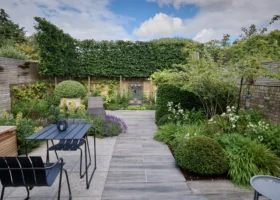
































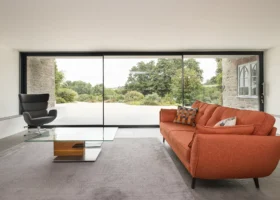






























































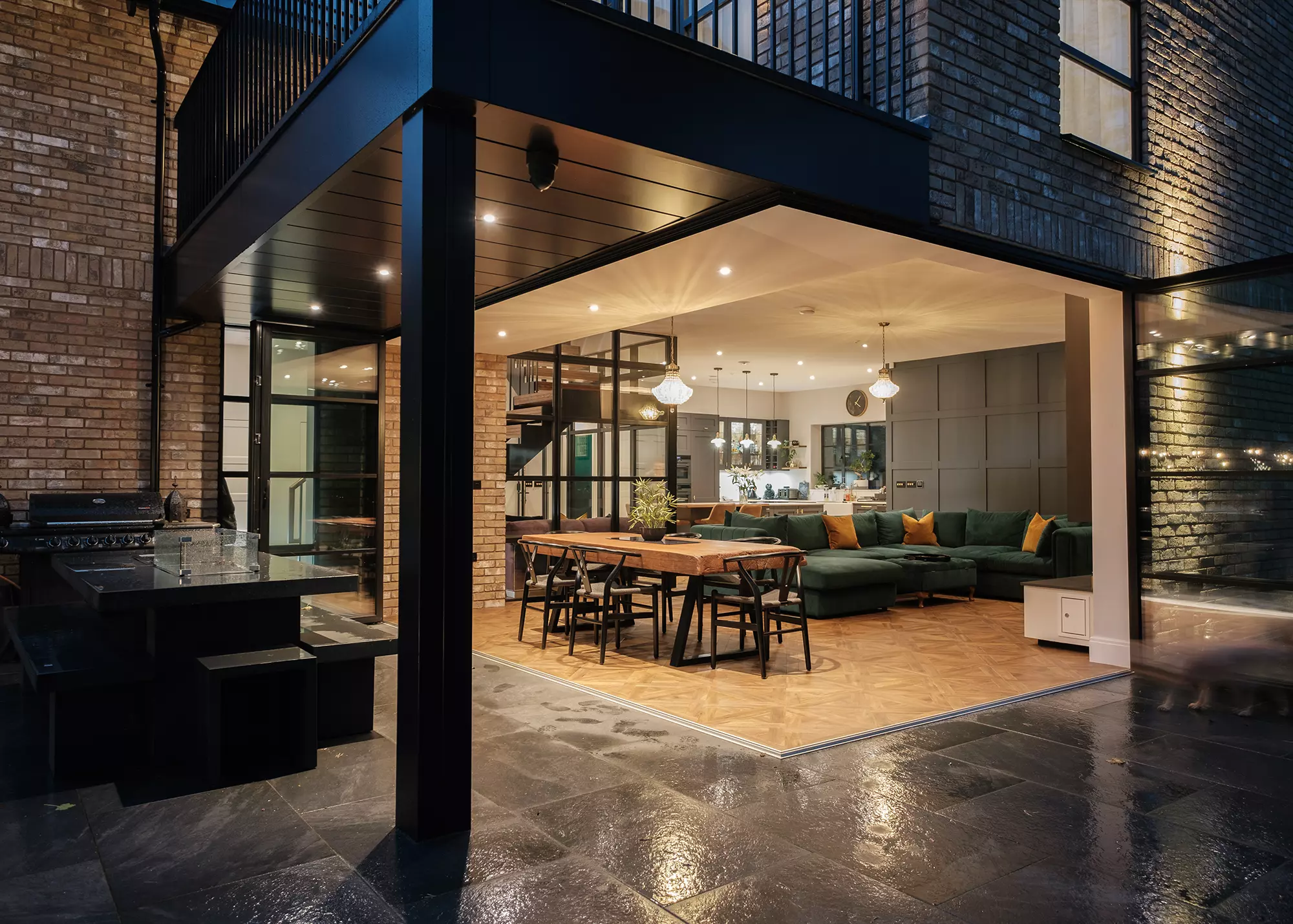
 Login/register to save Article for later
Login/register to save Article for later

